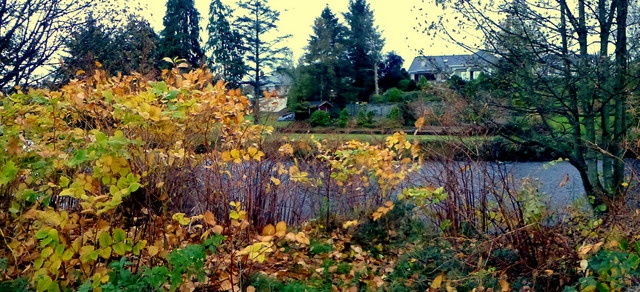During the autumn months, the majority of weeds and plants begin to die out and wilt with Japanese knotweed being no different. If you believe you have an infestation of knotweed on or near your property but are unsure and need confirmation, read on some tips on how to correctly identify Japanese knotweed in the autumn months.

Photo by Kenneth Allen
Identifying Japanese knotweed in the autumn
When trying to identify Japanese knotweed in autumn, there are a few things you should be on the lookout for:
- A very dense cluster of bamboo stems with a lot of foliage
- Plants that are approximately 2-3 meters high
- Leaves that are starting to turn yellow and are wilting
- Hollow bamboo-like stems that are beginning to turn from a reddish-brown into a darker shade of brown
- Leaves will contain a distinctive zigzag pattern on the stems
- The leaves will also have a distinctive heart-shape with a pointed tip and straightened edge
- During late autumn the canes will begin to die off and the plant becomes dormant
During the autumn months, Japanese knotweed will look similar to that in late summer, so shouldn't be too hard to identify. During these months, however, Japanese knotweed begins to flower where nearly all of the plant's resources are transferred to its rhizomes, causing it to grow significantly. This presents the optimal time to treat and reduce further rhizome growth.
Japanese knotweed treatment in autumn
If you're interested in how we work to treat Japanese knotweed during the autumn, take a look at our handy infographic below!

Do you require more information on Japanese knotweed during the autumn? Please feel free to get in touch with the Total Weed Control team today by filling out the form below - we'd be more than happy to help you out!
